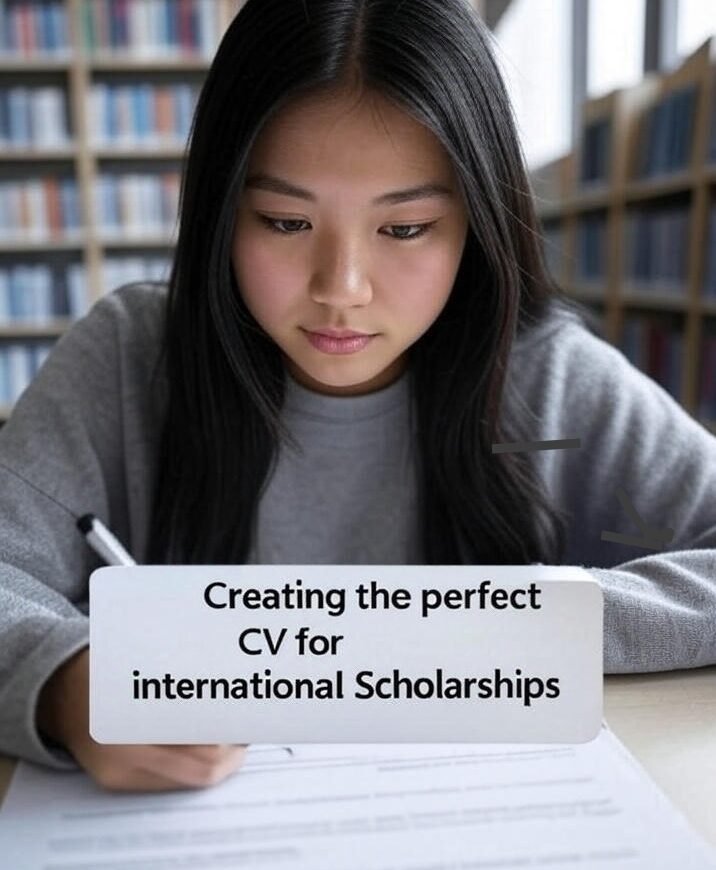Creating the perfect CV for international scholarships
When applying for international scholarships, one of the most important documents you will need is a CV which stands for Curriculum Vitae. A CV is basically a detailed summary of your academic background, work experience, skills and achievements. It’s your first chance to show the scholarship committee who you are, what you’ve done and why you deserve the opportunity. But unlike a regular job CV, a scholarship CV needs to focus more on your academic journey, research, and goals.
Creating a CV isn’t much of a big deal you’re probably picturing a list of your work history, schools you attended, and a few personal details. But when you’re gunning for an international scholarship, there’s a special twist you need to add so your CV stands out among hundreds of others.
In this guide, you will see how to create a CV that can help you stand out and improve your chances of winning that dream scholarship.
JOIN US ON TWITTER AND WHATSAPP
Twitter@apexbio24
1. Start with Your Basics, but Keep It Tight
Begin your CV with your name, email, phone number, and city/country. You don’t need your full mailing address or fancy header graphics. Keep it clean and easy to read. Right under that, add a one-line “Profile” or “Objective” that tells the scholarship committee exactly who you are and what you want:
“Driven biomedical engineering graduate aiming to pursue a Master’s in renewable energy at XYZ University.”
That line helps reviewers see, at a glance, why you matter.
2. Highlight Academic Achievements First
Scholarships live and die on academics, so bring your grades and relevant coursework to the top. List your highest degree first (e.g., “BSc in Biology, University of Lagos, 2023, 4.5/5.0 GPA”). If you won any academic prizes for instance Dean’s List, Best Research Project, etc. mention them here. Keep each entry to one line if possible, focusing on degree, school, graduation year, and any standout honors.
3. Showcase Research or Project Experience
Most international scholarships love to see that you can carry out a project. Under a “Research & Projects” heading, briefly describe up to three key projects. Use bullet points:
Project Title, Institution, Year
One-sentence description (“Developed a low-cost water filtration prototype that removes 95% of contaminants.”)
Your role and outcome (“Led a team of three; presented findings at the National Science Fair.”)
Quantify wherever you can numbers make a stronger impact.
4. List Work and Volunteer Experience That Aligns
If you’ve held a job or volunteered in a role related to your field, that’s gold. Under “Experience,” include your title, organization, dates, and 2–3 bullet points on what you did and learned. For example:
Lab Assistant, XYZ Research Centre, 2022–2023
Maintained bacterial cultures and recorded data for a study on antibiotic resistance
Trained two new interns in lab safety and protocols.
Even if you have only had part-time or casual work, you can frame it around transferable skills like teamwork, communication, or leadership.
5. Skills and Languages: Be Specific
Create a small “Skills” section listing hard skills (e.g., SPSS, Python, GIS mapping) and soft skills (e.g., public speaking, problem-solving). If you know more than one language, put a “Languages” section many scholarships prize multilingual applicants. State your level: “English (Fluent), French (Intermediate).”
6. Awards, Certificates, and Conferences
If you’ve attended academic conferences, earned certificates (like a Coursera specialization), or won any competitions, add a short “Awards & Certifications” section. Keep entries to name + year:
Best Undergraduate Thesis Award, University of Lagos, 2023
Certificate in Advanced Data Analysis, Coursera, 2024
7. Publications and Presentations (If Any)
If you’ve published a paper or given a talk, list it briefly. Use a “Publications” or “Presentations” header. Even a poster presentation counts. This section shows you can communicate research effectively.
ALSO SEE
Portugal Government Scholarship | Fully funded by the Portuguese Government
McCall MacBain Fully Funded Scholarship | Canada
University of Idaho Master’s Scholarship
Fulbright Scholarship Programme | Fully funded by the United States Government
University of Paris-Saclay Scholarship | Fully funded | France
Eric Bleumink Scholarship | Full funding | University of Groningen, Netherlands
Bradford University Scholarship | Fully funded | UK
Chevening Scholarship | Fully funded | UK
Beijing Normal University Scholarship
University College Birmingham Vice Chancellor Scholarship
University of Miami Stamps Scholarship
8. Tailor for Each Scholarship
Here’s the “special twist”: tweak your CV for each scholarship. Read the scholarship description and mirror the keywords they use. If they emphasize “community impact,” add any volunteer work or outreach you’ve done. If they seek “leadership potential,” highlight times you led a team or organized an event. Keep each CV under two pages brevity shows you can prioritize.
9. Clean Layout and Proofread
Use a simple font (Arial or Calibri), 11–12 point, with consistent headings and bullet styles. Leave enough white space so your CV doesn’t look cramped. Finally, proofread carefully typos or inconsistent dates can cost you. Ask a friend or mentor to give it one more look.
10. Finish with References (If Requested)
Some scholarships ask for referees on the CV itself. If that’s the case, list two or three professors or employers: name, title, institution, email. If they don’t ask, you can leave this off and simply note “References available on request.”
By following these steps keeping your CV clear, focused on academics and research, and tailored to each scholarship’s priorities you will give yourself the best shot at landing that international scholarship. Good luck!






